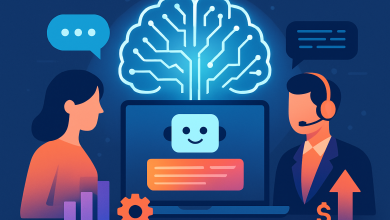
As artificial intelligence (AI) reshapes entire industries, the public sector finds itself at a crossroads. Agencies are under pressure to adopt new technologies while maintaining their commitments to transparency, legal compliance and public trust. AI holds immense potential to streamline operations and accelerate decision-making, but not all models are created equal. In high-stakes environments like government procurement, only models built with institutional understanding and public missions in mind can deliver the precision and accountability required.
The Limits of General-Purpose AI in Public Environments
AI is no longer a theoretical concept in government. From streamlining grant applications to expediting procurement reviews, agencies are adopting automation in an effort to keep pace with rising demands. However, research continues to show that off-the-shelf, general-purpose models often underperform in government settings.
A 2024 Deloitte report found that many public sector leaders are concerned about AI systems that lack transparency, traceability and alignment with regulatory mandates. These failures are not trivial. Public institutions operate within rigid legal frameworks. If an AI model misinterprets a clause in the Federal Acquisition Regulation or omits a necessary disclosure in a grant award, the result can be both reputational and legally damaging.
While general models are built to scale and respond broadly, public-sector workflows require more than linguistic dexterity. They demand structural intelligence. A model that cannot distinguish between a procurement threshold and a pricing clause or cannot flag when its response contradicts audit policy is not just inaccurate; it is a liability.
Why Institutional Context Matters
Government workflows are embedded with rules, approvals and documentation requirements that vary by agency, mandate and jurisdiction. It’s not enough for AI to generate fluent text. It must understand the constraints of the environment it serves.
A growing body of research confirms the need for models trained in an institutional context. Recommendations from public sector think tanks and advisory bodies emphasize fine-tuning AI tools to utilize agency-specific records, contracts and decision documents, thereby reducing hallucination and improving alignment with internal language standards. When this context is missing, AI tools risk producing advice that violates policy or skips required reviews.
Observations from public sector deployments reveal that models perform more effectively when compliance triggers are integrated into the inference process. A response that suggests a contract award must also cite relevant thresholds, constraints and precedents. These elements are not optional; they are essential.
Language, Structure and the Rise of Organization-Specific Models
General-purpose large language models speak universal grammar, trained on massive, mixed datasets that include social media, forums and open web content. While these sources help the model understand natural language, they do little to prepare it for the semantic structure of government documents.
Government, by contrast, operates within a dialect defined by acronyms, templates and embedded statutory references. A procurement officer doesn’t ask for a summary of a contract clause; they ask if it violates FAR 15.404-1(b)(2). These organization-specific AI models are trained exclusively on curated, agency-approved materials and can outperform larger systems in accuracy and relevance.
Fine-tuned models equipped with agentic retrieval augmented generation (RAG) systems deliver not only higher accuracy but also better alignment with regulatory expectations. Their reduced size lowers the compliance attack surface, limiting the risk of unauthorized or incoherent outputs.
Think of it this way: in high-stakes work, an organization-specific model is a scalpel. A general model is a Swiss Army knife. When precision matters, you reach for the scalpel.
Designing for Explainability and Trust
Public sector leaders consistently cite trust as the largest barrier to AI adoption. One of the most commonly reported concerns is the lack of explainability, especially when evaluating AI tools for use in regulatory or compliance-based environments.
To earn that trust, AI systems must be auditable by design. Outputs should include clause-level citations, hash-linked provenance trails and flags for risk-sensitive language. These capabilities cannot be retrofitted; they must be foundational.
Studies suggest that transparency drives adoption. Usage has been shown to increase when reviewers can trace every recommendation to a source paragraph and understand how risk is evaluated. When users understand a model’s reasoning, they are more likely to trust and defend its conclusions.
Implications for Other Regulated Sectors
What’s happening in government is a preview of where AI is headed in other regulated industries. Financial institutions face similar demands, from anti-money laundering reviews to stress test disclosures. In healthcare, models that assist with diagnosis must adhere to HIPAA logic and FDA-compliant guidelines.
Rather than building separate AI strategies from scratch, these industries can learn from how government agencies are adapting. Compact models, trained on internal data with embedded policy triggers, are proving more sustainable than general-purpose systems bolted onto legacy infrastructure.
Specialization is proving to be more effective than scale. In regulated sectors, smaller models built with contextual awareness often outperform larger peers in accuracy, explainability and speed. These lessons offer a roadmap for other industries navigating the path to responsible AI integration.
Smarter Models for High-Stakes Missions
The next frontier of AI is not bigger; it’s better. And in high-stakes environments, better means aligned; aligned with policy, with structure, with mission.
The public sector has shown that scale alone does not translate to value. What matters is whether a system understands the environment it serves. From procurement workflows to compliance reviews, the future of AI in government will be built not on brute force, but on contextual fluency and principled design.
For leaders in government and beyond, the question is no longer whether to adopt AI. It is how to adopt it in ways that promote transparency, minimize risk and serve the public good. Organization-specific AI is not just a solution. It’s a strategy.





